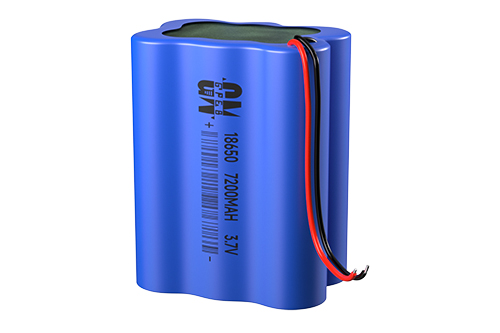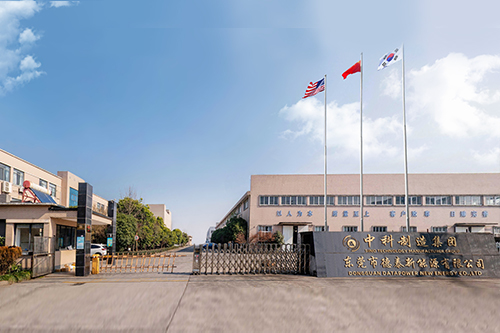Lithium cobalt oxide (LiCoO2) is the earliest commercialized cathode
material for lithium-ion batteries. Due to its high material density and
electrode compaction density, lithium-ion batteries using lithium cobalt oxide
cathode have the highest volume energy density, so lithium cobalt oxide is the
most widely used cathode material in the consumer electronics market. As
consumer electronics products, especially 5G mobile phones, increasingly require
lithium-ion battery life and size, there is an urgent need to further improve
battery volume energy density. Increasing the charging voltage of lithium cobalt
oxide batteries can increase the volumetric energy density of the battery. Its
charging cut-off voltage has gradually increased from 4.20V when it was first
commercialized in 1991 to 4.45V (vsLi+/Li), and the volumetric energy density
has exceeded 700Wh/L. . At present, developing the next generation of
higher-voltage lithium cobalt oxide materials has become a hot spot of common
concern among the scientific research community and enterprises. As the charging
voltage increases, lithium cobalt oxide materials will gradually suffer from
irreversible structural phase changes, decreased surface and interface
stability, and decreased safety performance, which limits its practical
application. Researchers usually modify lithium cobalt oxide materials by using
trace doping with various elements to improve their stability during
high-voltage charge and discharge processes. Understanding the mechanism of
action of different doping elements is crucial to designing lithium cobalt oxide
materials with better performance. However, experimentally determining the
mechanism of action of each trace doping element is challenging. Doctors Zhang
Jienan and Li Qinghao from the E01 Clean Energy Laboratory of the Institute of
Physics, Chinese Academy of Sciences/Beijing National Research Center for
Condensed Matter Physics, under the guidance of researchers Li Hong and Yu
Xiqian, used trace doping of three elements: Ti, Mg, and Al. (Doping ratio
<0.1wt%), the cycle stability and rate characteristics of the lithium cobalt
oxide material during the 4.6V high voltage charge and discharge process have
been greatly improved (Figure 1). The team further cooperated with relevant
research institutions such as Brookhaven National Laboratory, Stanford National
Accelerator Laboratory, Lawrence Berkeley National Laboratory, Jiangxi Normal
University and Hunan University to use synchrotron radiation X-ray
nano-three-dimensional imaging, resonance inelastic X-ray Advanced experimental
techniques such as ray scattering systematically studied the mechanism of trace
doping of Ti, Mg, and Al on improving the performance of lithium cobalt oxide
materials, revealing the unique effects of different doping elements on
improving material properties. The research results were recently published in
"Nature Energy" (Nature Energy, 2019, DOI: 10.1038/s41560-019-0409-z). The
article is titled
TracedopingofmultipleelementsenablesstablebatterycyclingofLiCoO2at4.6V. The
research team first used high-resolution transmission electron microscopy
combined with EDSEELS characterization to explore the distribution patterns of
different doping elements on the surface of material particles and within the
bulk phase. The results showed that under the same material synthesis
conditions, Mg and Al elements are more easily doped into In the crystal
structure of the material, the Ti element tends to be enriched on the surface of
lithium cobalt oxide particles. Laboratory in-situ X-ray diffraction results
show that Mg and Al doped into the lithium cobalt oxide lattice can inhibit the
structural phase change that occurs during 4.5V high voltage charge and
discharge. This structural phase change is generally considered to be the cause
of lithium cobalt oxide materials. One of the main reasons for performance
degradation under high voltage charge and discharge. Subsequently, through
synchrotron radiation X-ray three-dimensional imaging technology, it was found
that Ti is unevenly distributed in lithium cobalt oxide particles. Ti elements
are not only enriched on the surface of lithium cobalt oxide particles, but also
enriched at the grain boundaries inside the particles, which can provide cobalt.
The internal primary particles of lithium acid particles provide good
interfacial contact, thereby improving the rate performance of the material
(Figure 2). Further use of resonance inelastic X-ray scattering (RIXS)
technology found that the Ti element enriched on the surface can effectively
inhibit the oxidation activity of oxygen ions on the surface of the material
under high voltage, thereby slowing down the side reaction between the material
and the organic electrolyte under high voltage and stabilizing The surface of
the material (Figure 3). Finally, through first-principles calculations, the
research team further theoretically confirmed the doping rules and modification
principles of the Ti element. They believed that the Ti element tends to be
doped on the surface of the material and can delithiate the surrounding oxygen
atoms. Adjust the charge distribution under the material to effectively reduce
its oxidation activity. This work reveals the mechanism of Ti, Mg, and Al
co-doping to improve the performance of lithium cobalt oxide materials, and
illustrates the importance of comprehensive material design from different
dimensions such as crystal structure, electronic structure, and material
submicron scale microstructure to improve material performance. property,
providing a theoretical basis for the design of high-voltage and high-capacity
cathode materials. It also demonstrates the importance of multi-scale,
high-precision analytical characterization methods in revealing the intrinsic
physical and chemical processes of materials. The conclusions obtained from this
work also have reference significance for the design of electrode materials for
other battery systems.
Read recommendations:
801752 720mAh 3.7V
Understand the characteristics of explosion-proof lithium battery products through these points.L822
How to Control the Cost of Lithium - ion Batteries
energy storage system lithium battery Processing
li ion 18650 battery pack company











































 360° FACTORY VR TOUR
360° FACTORY VR TOUR
 Whatsapp
Whatsapp
 Tel
Tel Email
Email TOP
TOP